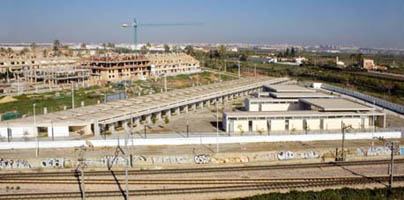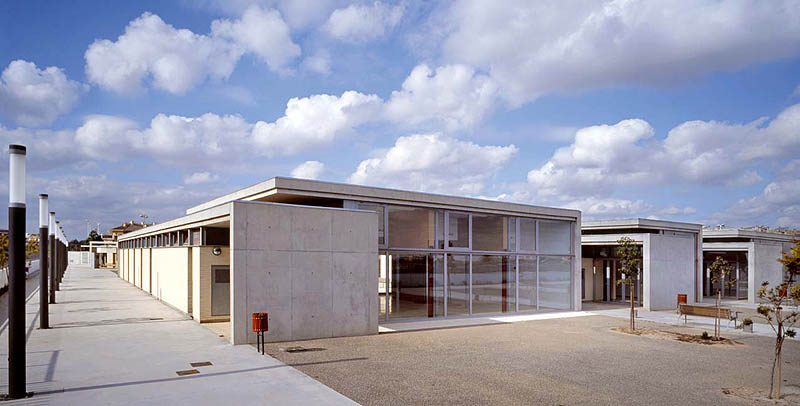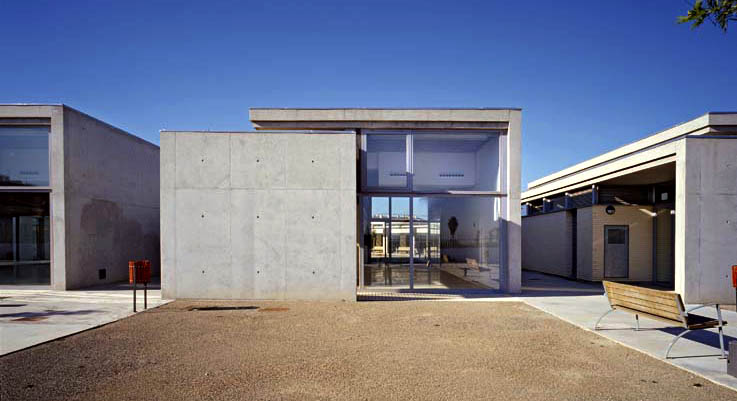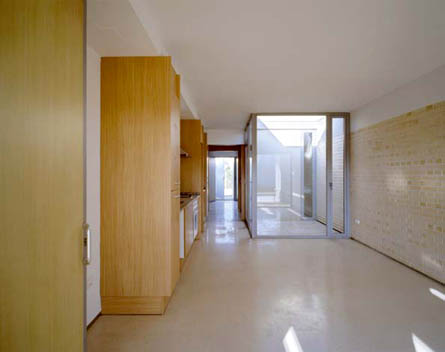| Viviendas tuteladas acogidas al programa de viviendas protegidas
y dirigidas a usuarios mayores, autosuficientes, con una serie de
servicios de apoyo. La filosofía de la propuesta es la de favorecer
agrupaciones de personas mayores en viviendas independientes y próximas
para generar espacios de convivencia y autoayuda, apoyados por
instalaciones de uso compartido, como salas de ocio, lavandería, comedor,
asistencia, etc. Los servicios de mayor importancia, como ambulatorios,
comercios, cines, etc, los proporciona el núcleo urbano.
La primera premisa es adecuarse a
las condiciones de utilización de las viviendas; las condiciones de
accesibilidad se resuelven con facilidad proyectando todas las viviendas
en planta baja, respecto a instalaciones y funcionalidad, los mecanismos
eléctricos y las luminarias están más bajos, la electricidad es la única
fuente energética, el almacenamiento cómodo y suficiente, el mobiliario
mínimo, la cocina es pequeña y de rápida limpieza y se crea ventilación
cruzada para evitar otros sistemas de climatización. El resultado:
viviendas adosadas, para una o dos personas, en planta baja, en módulos
de 3,75m de anchura y 13,40m de fondo edificado, con un porche y un banco
junto a la fachada delantera, para “sentarse a hablar”, un pequeño
ajardinamiento a personalizar por cada usuario frente a la fachada del salón,
y un patio trasero, con acceso directo desde la vía pública.
|
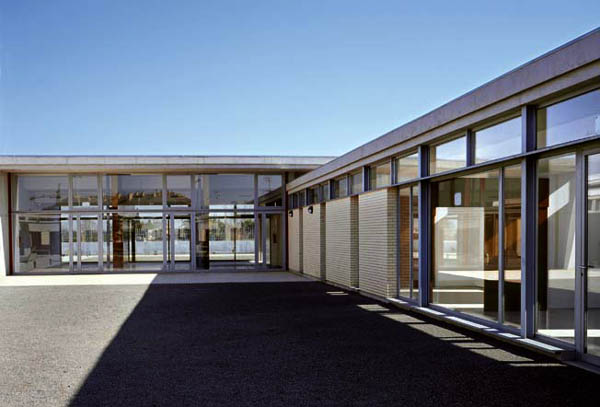
|
|
Adosado a uno de los muros de carga de
ladrillo perpendiculares a la fachada, la franja de almacenamiento y
servicios resuelve desde el salón al dormitorio, el alojamiento para el
mobiliario y el televisor, la cocina, el lavadero y dos armarios, uno frente
al baño y otro en el dormitorio. El resto de la crujía queda libre,
dividida en dos por el baño adaptado y un patio pequeño, de 2,00x2,00m,
que permite compensar la luz de la fachada principal, facilitar la ventilación
cruzada, visuales largas y la iluminación y ventilación del baño. Por
delante del baño y el patio queda el salón, y por detrás, junto al patio,
el dormitorio.
Constructivamente la estructura se
resuelve con muros de carga de ladrillo visto de 1 pie de espesor, y por
encima de la cota de 2,20m, un zuncho y una losa de hormigón visto,
evitando la utilización de falsos techos. Todo lo que no es estructura de
fachada o de cubierta se acristala con una carpintería de acero conformado
en frío y con juntas de estanqueidad, lacada y de muy bajo
mantenimiento.
Los servicios comunes se agrupan en
tres edificios en el centro de la parcela. Se resuelven con estructura metálica,
y se estructuran siempre en una crujía que aloja los servicios más rígidos,
acabada con ladrillo como en el caso de las viviendas, y un volumen
acristalado en dos de sus fachadas compartimentado con paneles móviles
acabados en D.M.
|



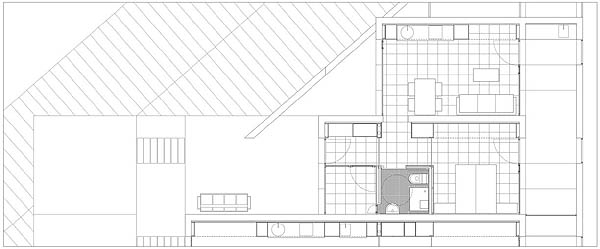
|
|
Sheltered houses covered by the price-controlled
housing programme, with a range of support services, designed for
independent elderly residents. The idea underlying the project is to
encourage groupings of elderly people in independent houses close to each
other in order to generate spaces where they can get together and help each
other, assisted by shared facilities such as lounges, laundry, dining room,
home help, etc. Larger-scale services such as health centres, shops,
cinemas, etc. are available in the town.
The first premise is to adapt to the
conditions in which the housing will be used. The question of accessibility
is easily solved by placing it all on the ground floor. As regards
installations and functionality, the switches and lamps are lower,
electricity is the only energy source, the storage is adequate and easily
reached, furniture is kept to a minimum, the kitchen is small and quickly
cleaned and cross ventilation is set up to avoid the need for other climate
control systems. The result is terraces of one-storey houses for one or two
people, in modules measuring 3.75 m wide by 13.4 m built depth, with a porch
and a bench at the front for ‘sitting and talking’, a small garden
outside the sitting room that each resident can personalise and a back yard,
reached directly from the street.
Set against one of the brick bearing walls
perpendicular to the façade, the storage and services strip that runs from
the sitting/dining room to the bedroom houses the cupboards and television,
the cooker, the sink and two wardrobes, one opposite the bathroom and the
other in the bedroom. The rest of the bay remains free, divided in two by
the adapted bathroom and a small yard, 2x2 m, that balances the light from
the main façade, facilitates cross ventilation, lengthens the views and
lights and ventilates the bathroom. The sitting/dining room is in front of
the bathroom and the bedroom is behind it, next to the back yard.
The structure is composed of ‘1 foot’
thick bearing walls of fair-faced brick, with a ring beam and an exposed
concrete slab above the 2.2 m level, avoiding the use of suspended ceilings.
Everything that is not roof or façade structure is glazed, with very
low-maintenance lacquered cold-formed steel joinery and weather-proof
gaskets.
The shared services are grouped into three
buildings in the middle of the plot. These have a metal structure and are
all laid out as a bay holding the more rigid services, finished with brick
as in the houses, and a block with two glazed façades that is compartmented
with MDF-finished movable panels.
|
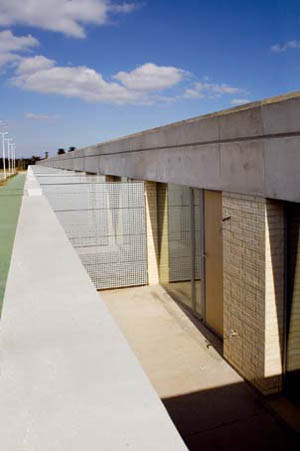
|
